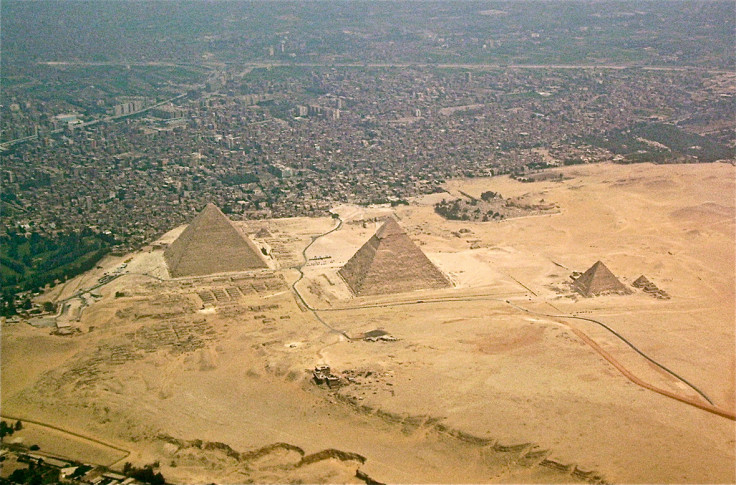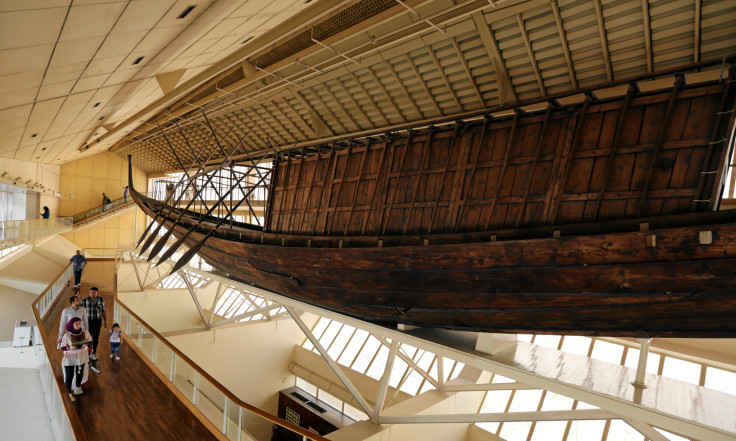Ancient papyrus reveals secret of how Egyptians built the Great Pyramid of Giza in 2600BC
For decades academics have debated how the Egyptians were able to carry 170,000 tonnes of limestone.
Archaeologists believe that they have finally solved the mystery of how the Ancient Egyptians built the Great Pyramid of Giza.
The pyramid is the oldest and only survivor of the Seven Wonders of the World having been built over a 20-year-period using locally-sourced limestone from Tora and granite from the south of the country.
The structure dazzled onlookers for thousands of years and remained the tallest man-made construction on Earth until the Middle Ages.
Built as a tomb for Pharaoh Khufu it stands at an impressive 481ft tall and was the largest of all the pyramids.
However, historians have long been stumped at how people with relatively primitive tools managed to transport the estimated how 800 tonnes of material every day from Aswan, 500 miles to the south.
Now ancient papyrus, a ceremonial boat and a system of waterworks have revealed the complex infrastructure created by builders to complete the structure.

An ancient scroll written by an overseer named Merer was discovered in the seaport Wadi Al-Jarf provides the only first hand account on record of how the pyramids were built.
Written on ancient papyrus (a plant-based paper used in the region at the time) Merer said thousands of labourers transported the 170,000 tonnes of limestone along the Nile in wooden boats, held together by ropes, reported the Mail on Sunday.

The estimated 2.3million blocks were dragged through a specially constructed system of canals to an inland port just yards away from the base of the pyramid.
Archaeologist Mark Lehner, an Eygptologist, also found a centuries-lost waterway underneath the Great Pyramid.
"We've outlined the central canal basin, which we think was the primary delivery area to the foot of the Giza Plateau," he said.

Archaeologists also found a ceremonial boat designed for Khufu, who was the second pharaoh of the Fourth dynasty (ruling Egypt between 2609 BC - 2584 BC).
The boat, historians believe, was for Khufu to sail into the afterlife, and despite finding parts of the boast all over the area since the 1980's restored wooden planks and 3D laser technology has shone light on just how it was built.
Scientists discovered that they were sewn together with loops of rope, and that this technique may have also been used to transport the huge blocks from Aswan.
The new discoveries are being revealed at 8pm (September 24) in Channel 4 documentary Egypt's Great Pyramid: The New Evidence.
© Copyright IBTimes 2025. All rights reserved.






















